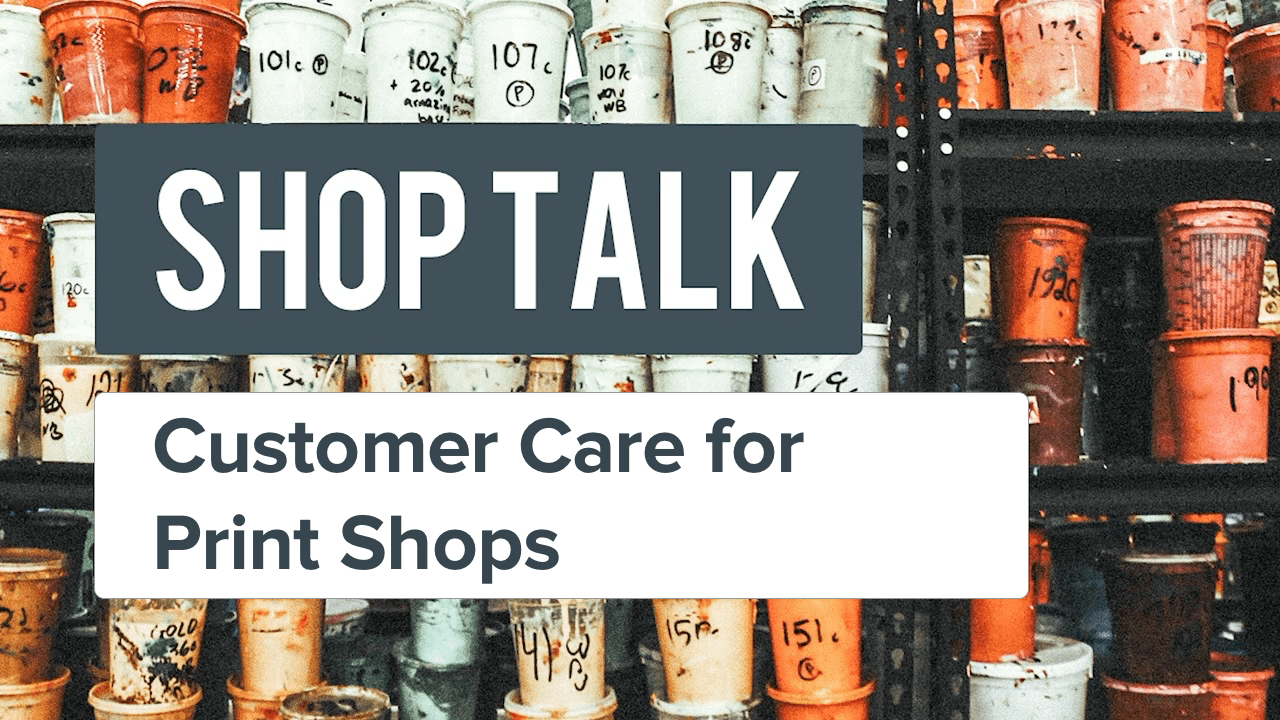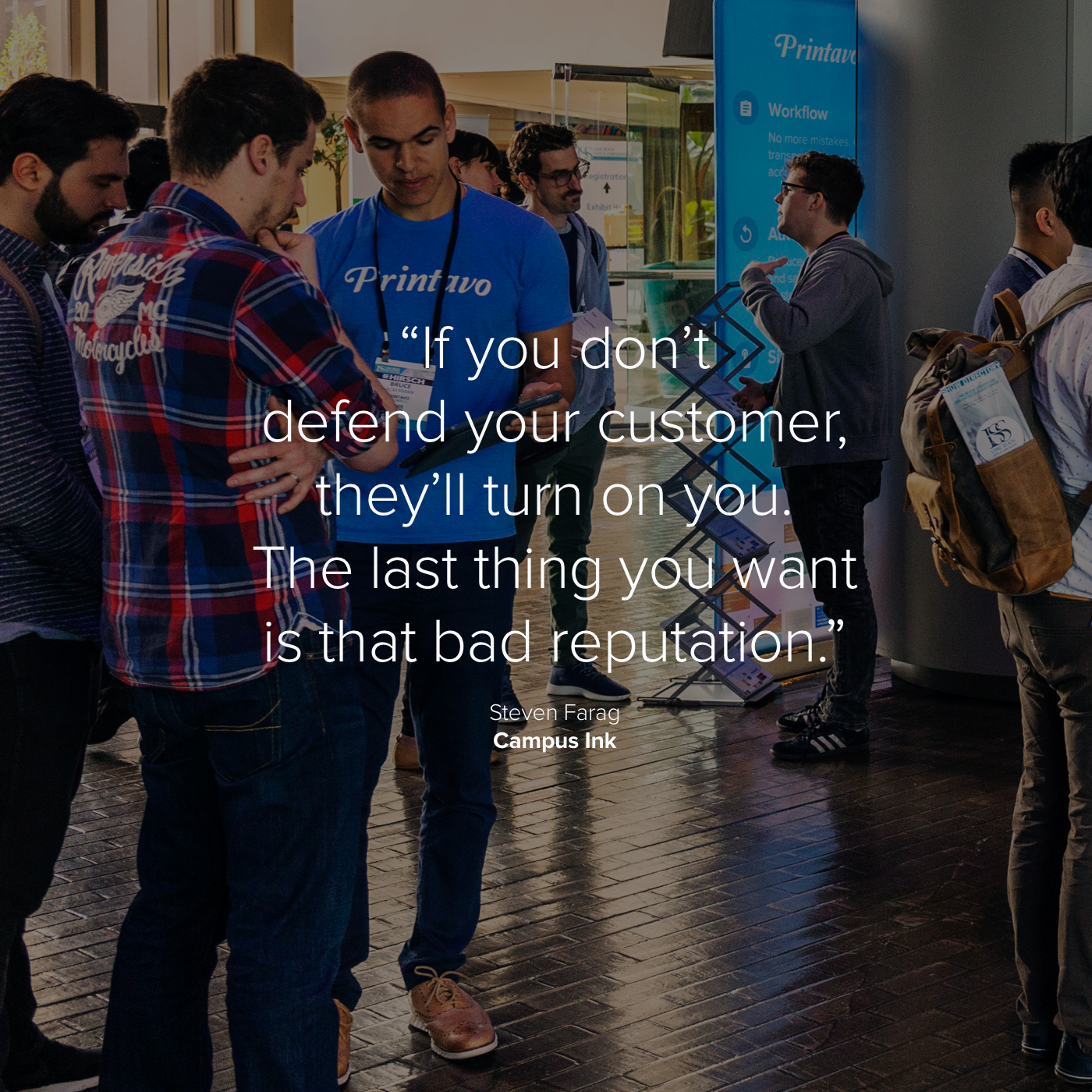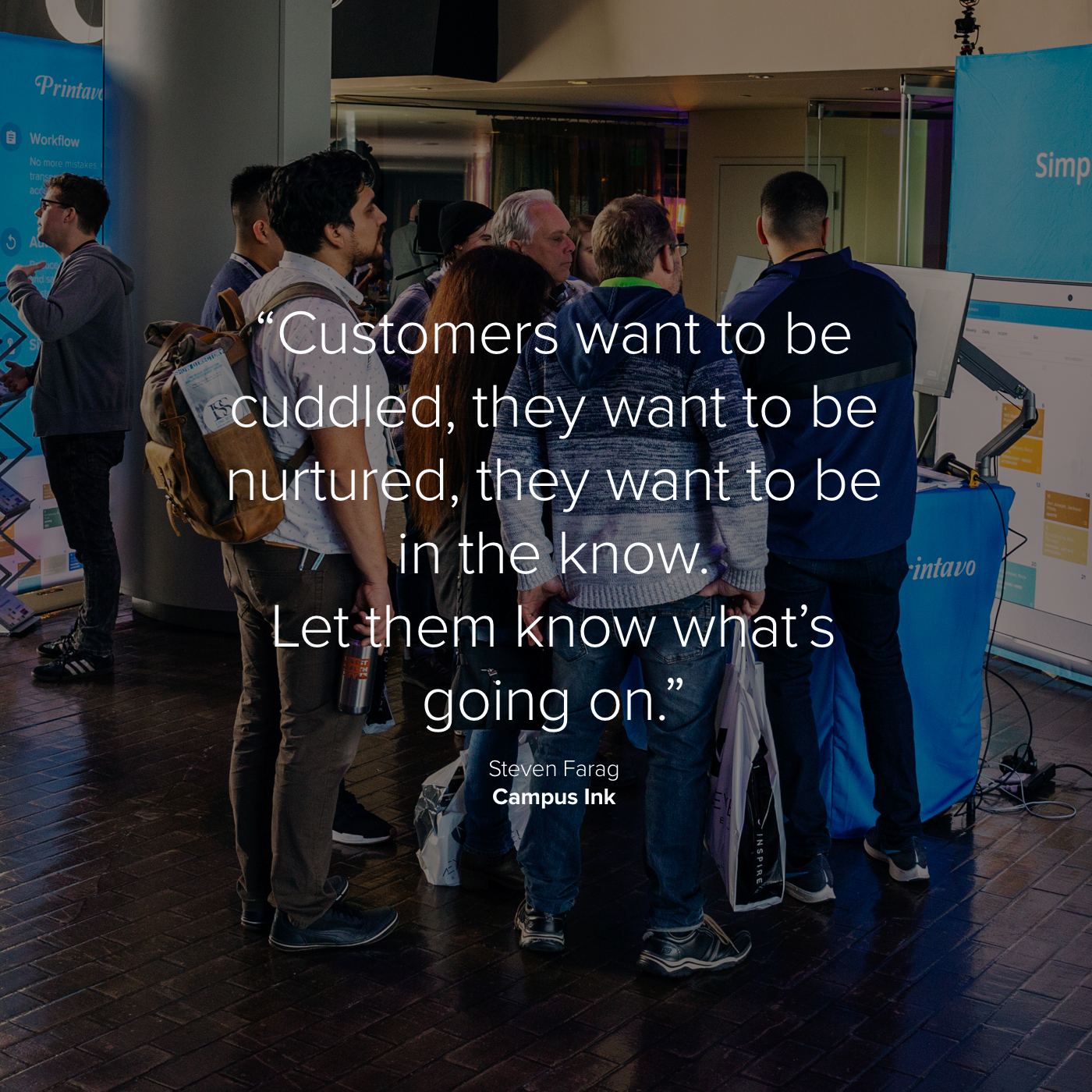Why should screen printers think like barbers?
There’s more similarity than you think.
Like a barber, your print shop creates a custom experience.
A really great barber creates a personal connection with their clients. They turn people into advocates that not only leave positive reviews, but actually refer new customers. The best barbers turn their clients into promoters – they don’t just wear the haircut, they blast social media with praise and thanks.
So how do you transfer the skills a barber uses to make a connection into your print shop? Start with the end: what’s your post-production follow through?
Follow through strong at the end of every order
When you’ve printed and shipped your customer’s screen printed merch, it’s time for the follow through. Follow through is the most high-value activity that screen printers and other custom merchandise creators can implement for customer care.
Your goal: Turn the customer into a repeat customer.
How to execute: Multiple small points of contact.
- Nurture the deal. After you close the sale and begin production, continue the communication process. This is a great entry point for customer education.
- Immediately send the customer’s invoice. A clear and concise invoice provides a great deal of customer assurance.
- Clearly format and send the tracking info. Customers really want to know the status of their orders at all times.
- Send a thank you note. You have to thank every customer. Consider sending cards or making a phone call to VIP clients.
- Have them enter a post-sale email marketing funnel. Create a unique email campaign for your customers to receive after the sale. This can focus on your new products, updates on your shop, or targeting their specific business based on its seasonality.
- Solicit online reviews. Reviews are crucial to your visibility and success. We recommend something like ReviewerPro to help you convert your customers into positive reviewers.
- Incentivize positive online reviews. If your sales staff takes customer orders, offer a bonus for positive online reviews that mention them by name. Train your team to follow up with their sales so that your shop is kept at the top of your customers’ minds.
Small mistakes can make big customer dissatisfaction
What this means: protect and defend the customer. Nurture them. Communication about each part of the process is irreplaceable.
Small mistakes have cost Steven customers: Many detractors had legitimate complaints. But others were upset by small things: “It took too long to get my invoice.” Steven’s conclusion: customers always want to be in the know. Whether the job is finished or not, keep them up to date. If it’s going to be late, let them know ahead of time.
The biggest mistake to avoid: Don’t let your printing errors get to the customers. Once you have flawed merch out in the world, it’s impossible to fix. Seems simple and obvious – but that’s how customers that were promoters become former customers that are online detractors.
How to root out problems: Map out your customer experience:
- What exactly is said
- What format it’s in
- How quickly the customer gets the communication
- What the tone and branding looks like
When small mistakes happen, it’s often the process that’s at fault rather than any one person. Delve into the exact points of contact that each customer goes through and make sure it’s as compelling as you’d want your experience to be.
Always measure customer sentiment
Think like Amazon: We’ve recommended the TAR system before (Thanks, Acknowledge, Resolve). But it’s also the follow-up surveys and engagement that Amazon strives for.
But let’s not be Amazon for a second.
“Have you ever had a really good haircut? It just went really well. And after, you realized the person was super cool, the wait time wasn’t long, and you leave feeling good and looking great? With a custom experience like getting a a haircut, it’s like the custom t-shirt experience.”
You don’t need to model yourself on a company with 600,000 employees – think small. Creating a custom experience for every customer is vital.
How to do it: Utilize a tool like Wootric to survey your customers. They have a free plan that gives you an email template that you can send to your email list. Steven asked:
- How likely are you to refer Campus Ink to your family or friends?
He spent hours reading the feedback and started implementing adjustments in his customer flow. He found that success involved rapid customer response times, a zero inbox policy (where all tickets and issues are resolved by the end of the day), a high volume of customer communication, and a dedication to keeping in touch with every customer throughout every phase of their experience with Campus Ink.
The next level: customer segmentation, channels, and sentiment
Start building systems: We recommend something like ZenDesk for keeping track of lots of customers. You can keep meticulous notes on your relationships and develop a much more rigorous strategy for keeping track of everyone that uses your services.
Using customer sentiment: Develop a system to stay close to your screen printing and custom merchandise customers and gauge their sentiment at all times. You don’t have to immediately act on all of the data, but it’s vital to take the temperature of your customers. You can feed the sentiment you take into spreadsheets or directly into your preferred email marketing suite.
Segmenting customers: Once you’ve started gathering data on customer sentiment, you can break them into segments and cater your marketing messaging to them. It’s possible to develop myriad segments: detractors, negative but not detractors, neutral, all the way up to brand advocates. You can then message each segment differently with your email marketing suite. This is valuable for managing relationships that have had trouble, keeping customers that are “on the fence” on your side, and really hammering on your positive relationships by offering discounts or special offers.
Constant contact: As you build and define your customer segments and profiles, you’ll be able to spend energy and time developing your high-value customer relationships. Nurture your positive reviewers, online advocates, and (if possible) influencers. Keep yourself at the top of your best customers’ minds.
Conclusion
Creating a better process for your customers after their experience is how to create repeat clients that will stay with you for years to come.
The simplest steps to take now:
- Don’t stop communicating with your customer. Invoice, tracking info, progress. Send updates for all of it. Be transparent and honest.
- Thank them. A genuine, personal thank you from whoever took the order is valuable. Make that human connection.
- Bring them back. Put them into a marketing funnel of some sort. Start engaging with them right away. Build that relationship and get them to come back time and time again.




0 Comments